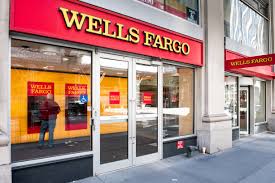Big Banks J.P. Morgan, Wells Fargo, and Bank of America Are Pulling Out of Lower-Income Neighborhoods

Big banks have been closing branches in lower-income areas and shifting more of their attention to wealthier ones, according to a new report from Bloomberg.
Overall, there’s been a trend among the biggest banks—specifically J.P. Morgan Chase, Wells Fargo, and Bank of America—to reduce their branch networks. Relying on ATMs and online banking is less expensive.
According to S&P Global data analyzed by Bloomberg, banks have shut 1,915 more branches in lower-income areas than they opened between 2014 and 2018, with J.P. Morgan, Wells Fargo, and Bank of America at the front of the trend.
There are broad implications for neighborhoods when branches close. Less competition means fewer choices for banking services and, potentially, higher costs as a result. According to a 2014 study by economist Hoai-Luu Q. Nguyen, now an assistant professor of business at the University of California, Berkeley, the number of small business loans made drops by 13% for several years and isn’t offset by the entry of other banks.
“About one-third of our financial center network is in [low- and moderate-income] neighborhoods and that has been consistent over a number of years,” Bank of America spokesperson Betty Riess told Fortune.
And J.P. Morgan told Fortune that Bloomberg’s national view of the data assumes “family income in all communities is the same” and that 26% of its current branches are in low-to-moderate income areas and 30% of new branches will be.
Wells Fargo sent a statement that it serves “significantly more markets than any other national bank peers, including in underserved communities where our branch closures have been notably lower (down 5 percent between 2014-2018) than closures in other markets (down 13 percent between 2014-2018).”
The 1977 Community Reinvestment Act, or CRA, was a response to many years of redlining that made it harder for people in minority and lower-income communities to get mortgages. It requires banks to report on how well they serve the financial needs of such areas. Lower compliance with the CRA can affect whether regulators allow bank expansions, new branch openings, or merger and acquisition activities. But regulators have been slow to police the issue, according to the Bloomberg report.
The Trump administration has sought to revamp CRA rules in ways that could make it easier for banks to comply, the Wall Street Journal has reported.
In addition, lower-income areas are often minority communities that continue to face financial discrimination, which a lack of choices can heighten. For example, a 2016 study showed that in some cities, African-American customers are less likely to get mortgages than white customers in similar economic situations.
